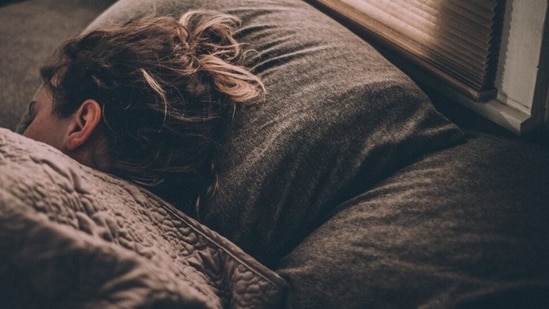In today’s society, it is believed that sleeping, especially naps during the day, is a sign of laziness. However, many are unaware that before the widespread use of light bulbs, people typically slept in two or three episodes, totaling around 12 hours. With the advent of 9 a.m. to 5 p.m. jobs and artificial lighting, the norm shifted to a single 7 a.m. to 9 a.m. episode at night. Unfortunately, this new pattern may not come naturally to us, and we may not be aware of how it affects our productivity.

I spoke to Dr. Manvir Bhatia, Senior Neurologist and Sleep Medicine Specialist at the Neurology Sleep Center in Delhi, and Vice President of the Indian Society of Sleep Research, about the role of the midday nap. “Midday naps have definite benefits that rejuvenate us and make us more productive. There are a few issues we need to pay attention to to get the most out of these naps – the time of day to nap and the duration of the nap.”
A study published earlier this year in the British Journal of Sports Medicine entitled “Is daytime napping an effective strategy for improving cognitive and physical performance related to sport and reducing fatigue? looked at exactly that. This study was led by Dr. Arthur Eumann Mesas from Spain and included team members from Chile, Brazil and Uruguay.
They reviewed 3,421 published research studies on the topic and selected 22 based on their rigorous, high-quality search criteria. These studies were conducted in Tunisia, France, the United Kingdom, Japan, Thailand and Australia. It is heartening to see this truly international cohort.
These 22 studies involved a total of 291 male participants, including 164 trained athletes and 127 physically active non-athletes who participated in exercise and sports for more than 7 hours per week. The age of the participants ranged from 18 to 35 years old. However, it is important to note that the lack of female study participants is a major limitation, as sleep patterns and benefits can differ significantly between men and women due to hormonal differences. Also, it would have been beneficial to include participants from a wider age range, especially those over 35, as this is when sleep can become more difficult for some people. .
However, in sleep medicine, we know, as Dr. Bhatia also underlined, the favorable effects of the daytime nap on sports performance and on the level of perception of fatigue in those who have slept enough at night and those who have partial sleep deprivation. But it goes back to Dr. Bhatia’s two points: The time and duration of the daytime nap.
The study found the following: A post-lunch nap around 2:00 p.m., lasting 30-60 minutes, was found to have significant additional beneficial effects on physical performance (e.g., speed, strength, endurance, distance, power), promoting moderate improvement in cognitive performance (e.g., reaction time, short-term memory, attention, vigilance) and reduction of fatigue or perceived exhaustion after sports activity. The other finding was that to get the most out of the midday nap on athletic performance, there needed to be a minimum time gap of 60 minutes between napping and doing physical activity, also known as the washout period.
The benefits mentioned above were observed mainly in people who already maintained a normal sleep pattern of 7-9 hours per night. However, those with partial sleep deprivation also showed comparable improvements. Although there is little research on this topic, the current evidence is inconclusive. It should be emphasized that relying solely on midday naps to compensate for poor sleep at night is not enough.
Mesas et al highlight the effect of sleep deprivation. “Sleep deprivation promotes neurocognitive deficits, dysregulation of circadian-regulated physiological functions (eg, temperature, blood pressure), and incomplete muscle recovery, which can accumulate over time into chronic partial loss sleep (restriction or deprivation).
A good example of someone who benefited from midday naps was John F Kennedy. He suffered from chronic back pain in the last years of his life. He was a hard-working president who wanted to make the world a better place. He was doing his morning exercise and swimming, followed by his official work. After his lunch, he asked not to be disturbed when he took a 1-2 hour nap. Once awake, JFK took his second shower and returned to work, completely rejuvenated, until about 8 p.m.
Then there was Thomas Edison, who was known to sleep 3-4 hours a night, but what most aren’t aware of is that he took long naps during the day. The world knows him for giving us the light bulb – but it was a stolen idea. What he definitely did, like most successful entrepreneurs, was monetize electricity by creating the electric meter and charging people for using it. Those midday naps helped him become productive, whether his ideas were original or not.
In the study, the beneficial results of midday naps were greater in physically active adults than in trained athletes. Mesas et al point out that it is necessary to consider that the margin for improvement in physical performance is lower in trained athletes, since they have a higher baseline level of performance due to a more training and rest routine controlled, than in non-athletes. “It is also necessary to point out that professional athletes report lower quality of sleep and hygiene than a cohort of non-athletes of the same age. Thus, the presence of chronic sleep-related problems may represent an obstacle to the potential beneficial effects of the nap on physical performance.
To better appreciate the appropriate length of a nap, it is essential to first understand the physiological dynamics of sleep.
sleep cycle: An average sleep cycle lasts 90 minutes. Ideally, there are 4-6 sleep cycles each night. The first cycle usually lasts 70 to 100 minutes. The second cycle and beyond last 90 to 120 minutes.
Non-random eye movement
• Step 1: 1-7 mins
• 2nd step: 10-25 mins
• Step 3: 20-40 minutes – during the first sleep cycles, it is longer and shorter as the sleep cycles progress
Random eye movement
Step 4: 10-60 minutes – lengthens as sleep cycles progress
Based on this science, Dr. Bhatia suggests that during the midday nap, don’t let it exceed 15 to 20 minutes. You will not enter stage 3 sleep and you will wake up rested and ready to move on with your life. Mesas et al accept. “The short nap allows sleep to reach the superficial levels of sleep, which would be sufficient for partial relaxation.”
So why is a longer nap of 30-60 minutes better, if affordable? Mesas et al suggest, “a longer nap that includes more time in deeper sleep phases may be necessary to alleviate the perception of fatigue and physical and mental exhaustion resulting from sports activity.
Dr Bhatia highlighted the problem of feeling irritable and groggy after a midday nap. To mitigate this effect, Mesas et al suggest a minimum interval of one hour between waking up from a nap and engaging in any physical activity, exercise, or sport to get the most out of the nap. This approach addresses the undesirable consequences of sleep inertia and improves physical performance to an optimal level.
The other point raised by Dr. Bhatia was about the timing of the midday nap. “If the nap is closer to the end of the day, it disturbs sleep at night.“Again, this was well addressed by the findings of the Mesas study. The best time to take a midday nap turned out to be shortly after lunch, around 2 p.m.
If you’re wondering how you could take a midday nap in the chaos of our busy lives, you have to learn a thing or two from the legendary Napoleon Bonaparte. He was full of energy and extremely focused during his military campaigns, but he was also gifted with the ability to take short midday naps on the battlefield itself, not even disturbed by the roar of cannons.
takeaway message: If you can afford it, especially if you work from home, take 30-60 minute naps around 2 p.m. shortly after lunch. Expect to be at your mental and physical best about an hour after you wake up. However, for the majority of us, a 15-minute nap around 2 p.m. is sufficient. Regardless, it is imperative to ensure that nighttime sleep is not compromised. Regardless, it is imperative to ensure that nighttime sleep is not compromised.
Keep smiling and smiling. And when you have the chance, take a short nap, like the hare.
Dr. Rajat Chauhan (drrajatchauhan.com) is the author of The Pain Handbook: A non-surgical way to manage back, neck and knee pain; MoveMint Medicine: Your Journey to Optimal Health and The Ultra: Couch at 5, 11 and 22 km in 100 days
He writes a weekly column, exclusively for HT Premium readers, that breaks down the science of movement and exercise.
Opinions expressed are personal



